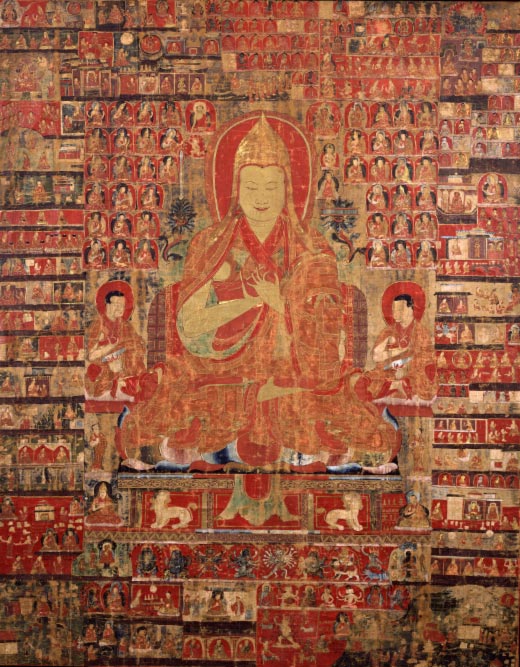
FIG. 5
Life Story of Tsongkapa (1357–1419); Himalayan region; 15th century; Pigments on cloth; 50 3/4 x 38 in. (128.9 x 96.52 cm); Rubin Museum of Art; F1996.5.1 (HAR 410)
The Teacher as the Buddha
A picture is a written history.
Not all Tibetan narrative paintings invited a complementary oral component. Some of them, often created as a series devised and commissioned by prominent Tibetan masters in order to communicate historical developments of their particular traditions, are straightforward illustrative narratives. They commonly include captions that identify specific scenes. Such paintings were frequently the visual renditions of written biographies (namthar) of lineage masters and important teachers of their tradition (FIG. 5).
The teachers were usually depicted with iconography similar to the Buddha's: their figures are larger than the others in the painting, displaying gestures (mudras) symbolically indicating their enlightened status or their role as teacher and holding implements identifying them as emanations of deities. Compositional structure, as is the case with this painting narrating the life of Tsongkapa, is also comparable to the early depictions related to the life of the Buddha. The large central figure of Tsongkapa (1357–1419), the founding master of the Gelug Tibetan tradition, is shown surrounded by smaller, captioned scenes from his life.
Depictions of life stories of masters probably make up the majority of Tibetan narrative paintings, and the manner in which these narratives are presented, perceived, and maintained is as varied as the paintings themselves.


